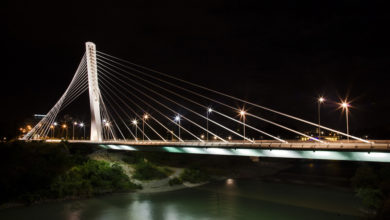New Clues to Possible Life on a Moon of Jupiter

Itt’s hard not to love Europa. It is far and away the most promising of Jupiter’s 79 moons, covered in a rind of water ice perhaps 30 km (18 mi.) thick. The ocean beneath the ice contains a salty, world-sweeping sea that scientists estimate to be 150 km (93 mi) in depth. deep. As its larger sister moons—Io, Ganymede and Callisto—pass by in their orbits, their gravity causes Europa to flex slightly, generating interior heat that prevents the water from freezing. Give a warm, salty, amniotic ocean like that a few billion years, and there’s no telling what kind of life it could cook up.
NASA has known for years that it is not possible to place a probe on Europa without drilling through the 30km of ice crust. This would make it impossible to determine what beneath. A study was published on Tuesday. Nature Communications suggests that liquid water might exist in lakes and pools much closer to Europa’s surface, where a spacecraft could more easily get at it. Those tantalizing findings come not from studying Europa itself, but a much more familiar—and decidedly more accessible—place: Greenland.
Of all the features that mark Europa’s surface, none are as common as its network of double ridges. Essentially a series of criss-crossing gashes in the moon’s surface each hundreds of miles long, they take the shape of twin ice berms with crests reaching 304 m (1,000 ft.) in height, separated by valleys about 0.8 km (0.5 mi.) wide.
NASA doesn’t currently have spacecraft that can monitor Europa. But it makes regular overflights to Greenland in an airplane, which takes pictures and radar soundings on the ice, so they can study climate change. One such flight saw the cameras capture a double-ridge that was almost identical to Europa’s. Radar data revealed that water had percolated up through the ice, forming the gash and then refreezing. The ice froze and cracked because water expands when it freezes.
According to the paper’s authors, this little bit of hydrology can have huge implications for Europa. Its double ridges can be formed similarly, meaning water from the subsurface ocean will also pool there. What’s more, when the ice initially cracks open, the water would be exposed to the chemistry on the surface, which includes sulfur and oxygen from the volcanoes of the nearby moon Io, as well as methane, carbon, nitrogen and hydrogen carried by meteorites that may have collided with the surface. The subsurface pool could contain this pre-biotic material.
“Water breaching the surface would be one way for the chemicals to infiltrate,” said Stanford University PhD student Riley Culberg, the lead author of the paper, in an email to TIME.
It is important to know if near-surface water pools are found on Europa. NASA plans to send the Europa Clipper into the Jovian to examine the icy moon. A powerful radar with ice penetration will search for any water-filled pockets. Next up—though NASA has no firm date yet—is a proposed Europa lander that would study the surface ice and drill at least partway through it, sampling its chemistry.
Here are more must-read stories from TIME





